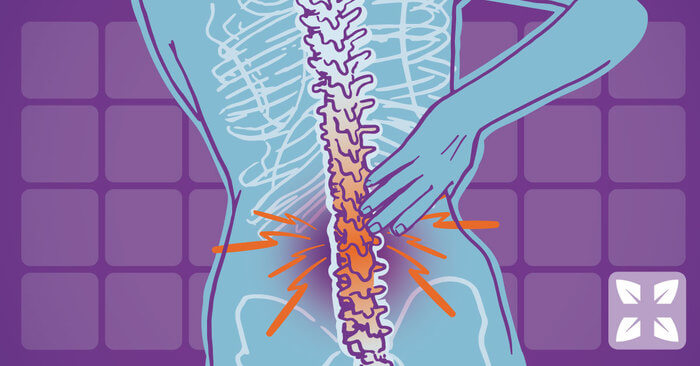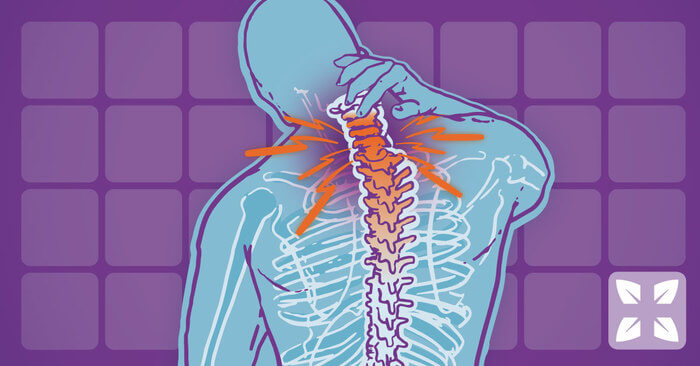Experiencing work-related back pain is common
and can happen no matter where you work. People who work in offices,
construction workers, and anyone who has to remain standing for long periods of
time can all experience back pain.
Common causes of back pain include:
- Force. Lifting or moving
heavy objects can exert too much force on your back, which can result in
injury.
- Repetition. Any repetitive
movement that involves twisting or rotating your spine can result in back
injury.
- Inactivity. Inactive jobs or desk
jobs can contribute to back pain, which can get worse if you have bad posture
or sit in a chair with inadequate back support.
Fortunately, there are many things you can do
to get back pain relief. To help avoid back pain and injuries at work, focus on
the following:
- Pay attention to
posture.
Don’t slouch. When sitting, make sure your chair has adequate support for your
spine and adjust your seat so that your feet are flat on the floor. Also remove
your wallet from your back pocket when sitting to prevent extra pressure on
your buttocks and lower back.
- Lift properly. Lift any heavy objects
with your legs and tighten your core muscles, holding the item close to your
body. Don’t twist when lifting and, if an object is too heavy, ask for help.
- Modify repetitive
tasks.
If possible, use lifting devices to help you lift heavier objects. If you work
at a computer, make sure that your chair, monitor, mouse and keyboard are
positioned correctly.
- Listen to your body. If you’ve been sitting
for an extended period, make sure you get up and move around periodically. It’s
also important to gently stretch your muscles to help relieve any tension.
Work-Related Back Pain
Back pain at work, or a sore back after work,
can stem from many different sources. Depending on what kind of job you have,
your back pain can be caused by things you do every day. These are the most
common types of jobs that have their own unique challenges related to back
pain:
- Desk jobs. If you’re sitting at a
desk from 9-5, you’re at risk for non-accidental back injury. Making sure your
work environment is ergonomically designed can help reduce your chances of
getting a back injury.
- Standing jobs. Some jobs require you
to stand for long periods, such as hostesses or cashiers. Making sure that you
stretch periodically and also wearing comfortable shoes can help here.
- On your feet jobs. Waiters and
waitresses, doctors and nurses, and others spend most of their work days moving
around. While activity is good, it’s also important to make sure you’re paying
attention to posture and not unnecessarily twisting your spine.
- Manual labor jobs. For people who work in
construction, landscaping, or other jobs that involve heavy lifting, it’s
important to lift correctly to avoid back injury.
Lower Back Pain Relief
If you’re experiencing lower back pain, there
are ways to help alleviate the pain. Here are some things you can do to keep
lower back pain at bay:
- Hot and cold
treatments.
If you’re experiencing lower back pain, treating the area by alternating hot
and cold compresses can help. It’s important to start with cold applications
during the first 24-48 hours, then move to hot treatments.
- Over-the-counter
medication.
Nonsteroidal anti-inflammatory drugs (NSAIDs) and acetaminophen can help with
lower back pain. Talk with your doctor before taking any pain medication.
- Physical therapy. Physical therapists
can show you the most beneficial ways to sit, stand, and move to help you deal
with lower back pain. They can also show you how to strengthen your core, which
helps strengthen muscles that support your back.
- Nerve stimulation. This includes using
methods like acupuncture and transcutaneous electrical nerve stimulation (TENS)
to stimulate the nerves, which can block incoming pain signals.
- Spinal injections. For certain kinds of
back pain, your doctor may recommend a spinal injection to help reduce pain.
Depending on the medication being used, your doctor may limit your number of
doses per year to avoid side effects.
- Back surgery. This is typically the
last resort. If you have a bulging disc pressing against a nerve, your doctor
may recommend surgery, such as a laminectomy or discectomy, to help fix the
pain.
- Biofeedback. This involves using a
special machine that helps you train your brain to control your response to
pain. By moderating your breathing, heart rate, blood flow, and muscle tension,
you can reduce your pain intensity by as much as 30%.
- Acupuncture. According to the
National Institute of Neurological Disorders and Stroke, acupuncture can be
effective for treating lower back pain. The needles used in acupuncture can
stimulate the release of pain causing chemicals in the body.
- Rethink your workplace. If you spend your days
behind a desk, there are ergonomic changes you can make that provide lower back
pain relief, including how you position all of the things you use on a daily
basis.
- Key objects. Whatever things you
use the most during the day should be positioned nearby, close to your
keyboard. Repeated twisting and reaching can cause strain on your lower back.
- Chair. Your chair should be
adjusted so that your feet are comfortably flat on the floor and your hips and
knees are aligned. Your chair also should provide adequate support for your
lower back.
- Monitor. In most cases, your
monitor should be roughly an arm’s length away with the top of your screen just
below eye level.
Upper Back Pain Relief
In addition to using many of the methods
described above for lower back pain, there are many things you can do help
relieve pain in the upper back:
- Exercise. Staying active by going
on regular hikes, participating in sports, lifting weights, and stretching can
all help condition the upper back.
- Quit Smoking. If you need another
reason to quit smoking, multiple studies show that people who smoke are more
likely to have chronic back pain and accelerated degeneration of discs.
- Cognitive behavior
therapy.
Your therapist can help you find better ways to deal with negative thoughts
associated with your back pain.
- Mindful meditation. This method involves
learning meditation and breathing techniques to help reduce stress, which can
be as effective as cognitive behavior therapy for helping patients better deal
with chronic back pain.
Occupational Medicine at Baptist Health
If you have any additional questions about work-related back pain, find a Baptist Health provider near you today.


